Background Intro
A hot bath or shower in the evening may be the perfect way to relax after a tired and busy day in winter. For some people, showering at night includes washing their hair, which may still be wet when they go to bed. It is widely believed that going to bed with wet hair is a bad idea. In some ways, it can increase the risk of waking up with a cold or cause knots and breakage. In spite of widely-held belief, there isn't a lot of strong scientific evidence that sleeping with wet hair has a negative influence on people. Depending on the circumstances, a person should consider whether it's the right thing to sleep with wet hair or take some time to let it dry before bed. We've taken a closer look at the side effects of sleeping with wet hair and offer advice on caring for your hair when sleeping.
Related :https://www.wigshe.com/blog/hair-care/how-to-shower-with-a-wig-on-in-the-right-way.html
Eight Side Effects of Sleeping with Wet Hair

Whether it's summer or winter, sleeping with wet hair is not only harmful for your hair but also for your health. Over these years, there have been many debates about the effects of sleeping with wet hair, but most experts agree that it is a bad habit. Here are seven side effects of sleeping with wet hair. Let's scroll down!
#1 Break Hair

As we know, hair is most fragile when it's wet, so it's no surprise that leaving your hair wet while you sleep increasing breakage. Especially,when you sleep, tossing and turning, friction can cause your hair to break more easily than when it's dry.
#2 Catch a Cold

If you sleep in an air-conditioned room or during the peak of winter, damp hair can make you feel cold. You may suffer from cold and sore throat due to wet hair. Therefore, avoid rinsing your hair before going to bed to prevent the flu.
#3 Worsen Immune System

Sleeping with wet hair does not lead to any serious diseases, but it indirectly suppresses your immune system. Body temperature is usually lower at night. What's worse, sleeping with wet hair lowers it further. Studies have shown that a lower body temperature minimizes the immune response to fight sore throats and common colds
#4 Increase Dandruff

Damp hair and head warmth can eventually lead to the appearance of fungus and bacteria colonizing your pillow and scalp. When you sleep with wet hair, the natural oils and moisture in your hair are absorbed into the fabric. Consequently, the depletion of natural oils and increased bacterial growth can give rise to dandruff and an itchy scalp.
#5 Generate Acne

When your pillow becomes a breeding ground for bacteria, fungi and mould, your skin is likely to develop acne very quickly. That's why it's important to dry your hair appropriately before going to bed.
#6 Make your Hair Dull and Hair Loss
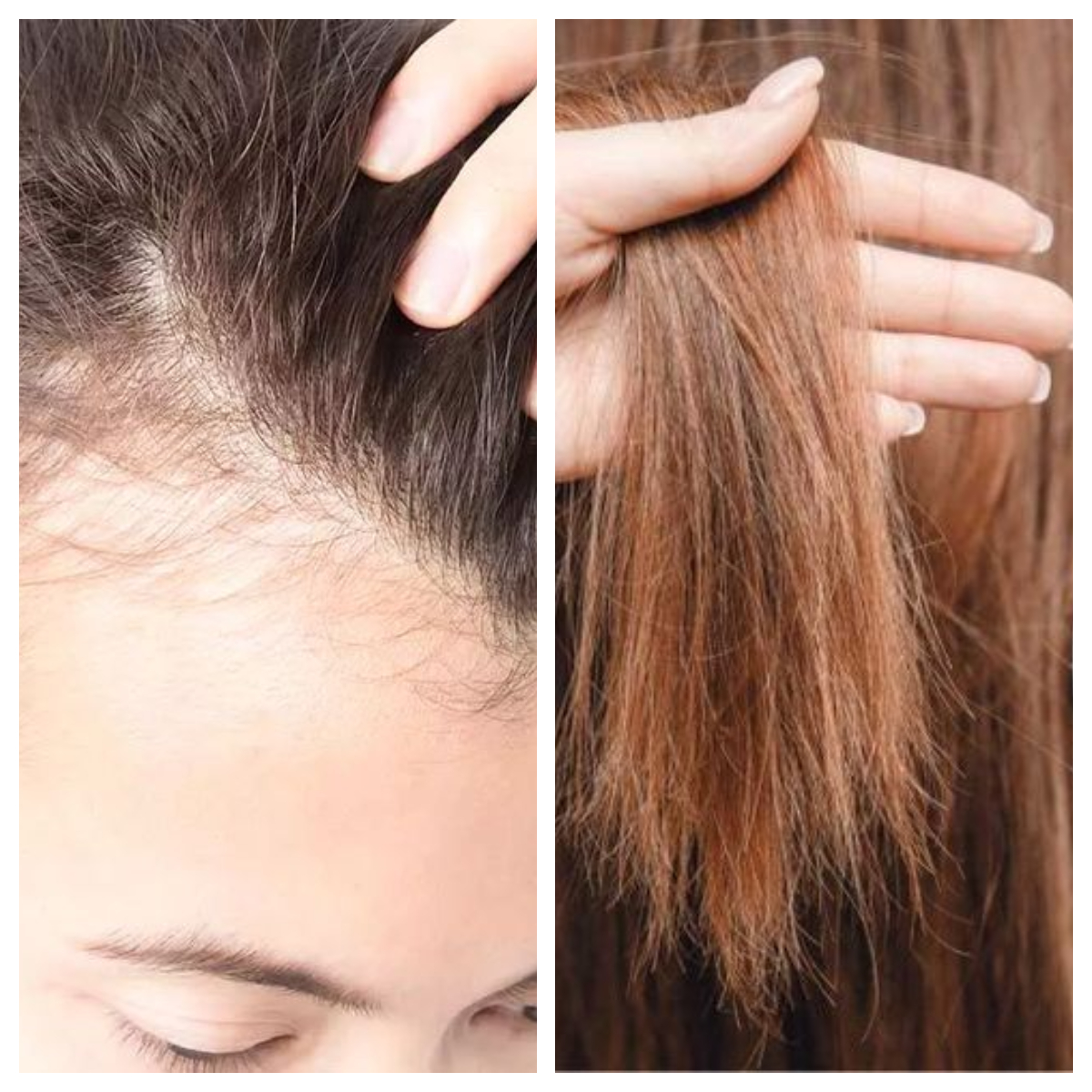
As the moisture in your hair is taken in the fabric of your pillow, so are the natural oils. Without these oils, your hair will look duller and dehydrated
Can you believe this? Sleeping with wet hair can lead to hair loss and, more specifically, to ringworm of the scalp. Ringworm of the scalp is a fungal infection caused by warmth and humidity. It is highly contagious, so be careful washing anything that has touched your scalp. We'd rather have long hair than lose it!
#7 Infect your Scalp

The warm, moist environment created between wet hair and bedding is a breeding ground for bacteria and fungus. Here are three kinds of bacteria and fungus below.
Malassezia. While this fungus normally lives on the scalp and skin, it can significantly overgrow in humid environments. This overgrowth will eventually make for skin flaking and itching called seborrheic dermatitis
Staphylococcus. This bacterium can invade hair follicles, leading to a superficial infection called folliculitis. Here, red, inflamed bumps and pustular papules appear around the hair follicles.
Aspergillus. This mould can be found both indoors and outdoors, and pillows dampened by sleeping with wet hair can provide a good environment for mould growth. This can be a problem for people with weakened immune systems or respiratory problems.
#8 Spend More on Hair Styling Products
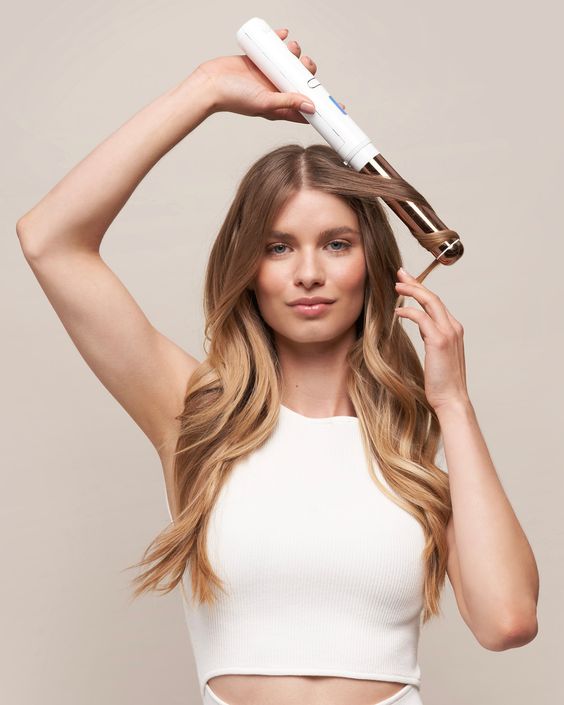
No one wants to flaunt a bad "bed head" look! When you sleep with wet hair, your hair dries and sets randomly as you toss and turn. Usually, the worst affected areas are the ends and top of the head. You can only smoothen your hair by restyling it with hairspray, aerosol, heat styling tools or serums. Not only do you have to invest time in styling your hair, but you also have to spend money on these hair styling products and tools. What 's worse, overuse of these tools can further damage your hair.
Tips for Sleeping with Wet Hair
For those who has straight hair, here are some tips to try to keep your hair as healthy as possible when you sleep with wet hair in winter.
#1 Shower Early in the Evening
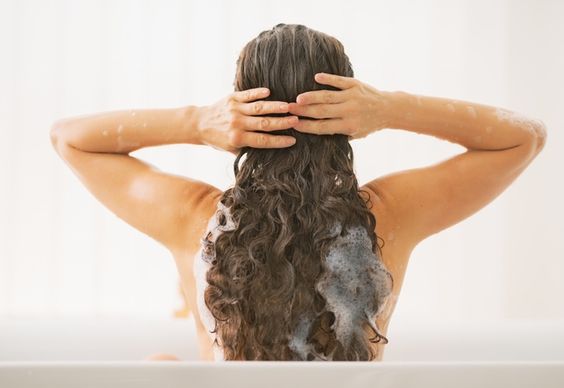
The first step in adjusting your nightly routine is to wash your hair. For instance, you can take a shower two hours earlier. That way, it can air dry while you brush your teeth, take care of your skin, pack your lunch, read, stretch, etc. Hence, we will sleep earlier and have enough sleeping time.
#2 Make Hair Loose
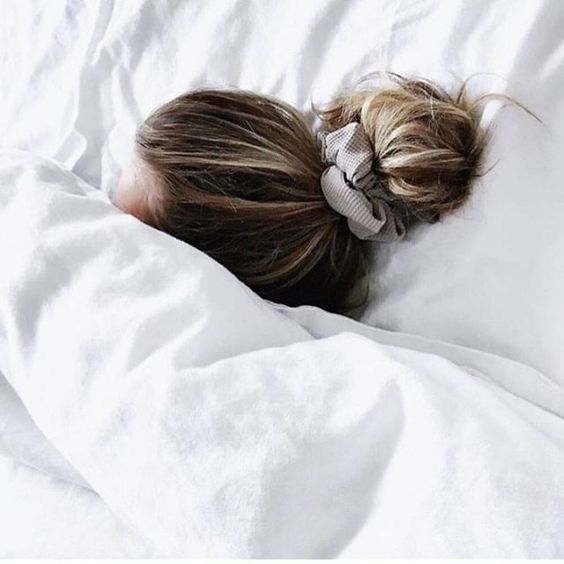
Hairstylists suggest putting wet hair in a bun or French braid to create a more attractive morning look. However, when your hair is wet, you must be discreet not to make these hairstyles too tight.
As we mentioned before, wet hair is fragile and tight braids or messy knots can contribute to hair loss and breakage. If you don't want to wear your long hair down to bed, opt for very loose braids or a gently twisted bun secured with a silk or satin hair band to hold back frizz, especially if you have fine hair.
#3 Use Leave-In Conditioners
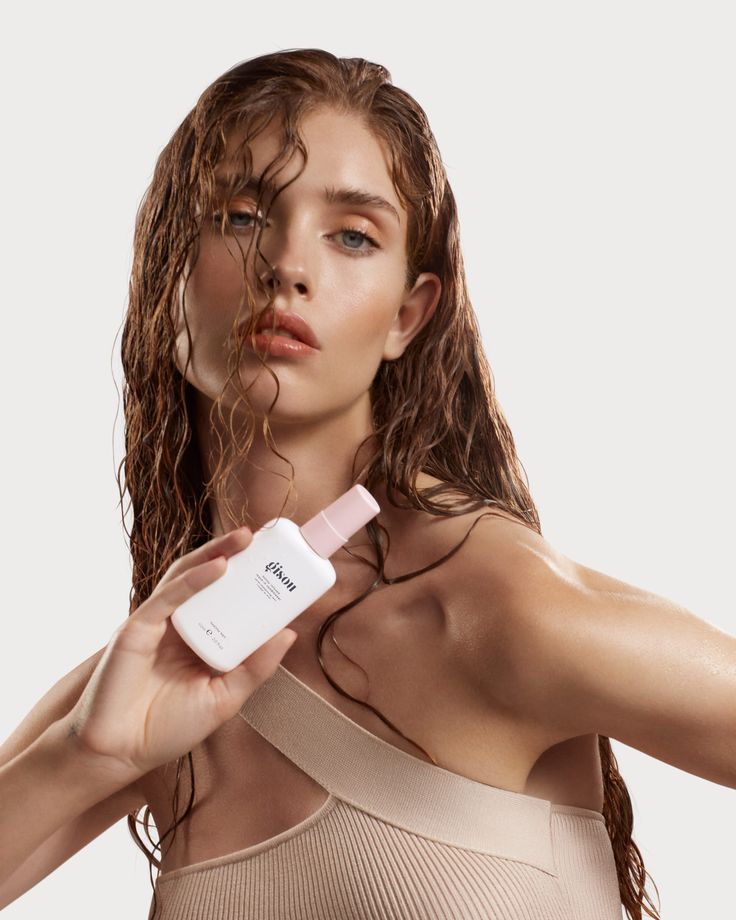
We can prevent further damage to your hair follicles and to restore your scales' natural barrier from external elements, making use of a leave-in conditioner as part of your nightly hair and skin care regimen. Long-lasting moisturization for your scalp and hair strands are provided which is beneficial for preventing dryness and damage.
Leave-in conditioners are very useful for detangling your hair, which can be especially helpful if you often wake up to find tangles after going to bed with wet hair.
Keep in mind that different hair types may require different products. On the one hand, a heavy leave-in conditioner may leave their hair feeling greasy and heavy. On the other hand, if you have curly hair, you may find that it doesn't provide enough moisture to your scalp!
#4 Wear a Silk Pillow, Scarf or Hat to Bed

Silk pajamas don't just look luxurious (although they really are, too); they also help keep your hair strong, hydrated and smooth. So, wear a silk or satin pillowcase, headscarf or hat when you sleep, which allows your hair to slide around as you turn over. Unlike cotton, silk and satin prevent friction which causes hair to pull, tug, stretch, break and tangle. These smooth fabrics help retain the hair's natural oils.
Let your hair dry as much as possible
It sounds like good to let your hair dry as much as possible before you go to bed. You can spend some time on air dry or using a hairdryer to make it partially dry. Or wrap your hair in a microfiber towel for a few minutes so that it is no longer visibly dripping can make a difference.
#5 Change your Bedding Frequently
Usually, changing your pillowcases after sleeping on them with wet hair is also a good method to prevent increased microbial growth. You may even need to change your bed linen if your hair gets wet during the night. Additionally, if you regularly sleep with wet hair, a waterproof mattress protector can contribute to extending the lifespan of your mattress and keeping it as clean as possible.
For those who has wavy or curl hair, it is difficult for women to take care of wet and curl hair. Here are some tips. Let's have a try!
#1 Apply Styling Products to Damp Hair
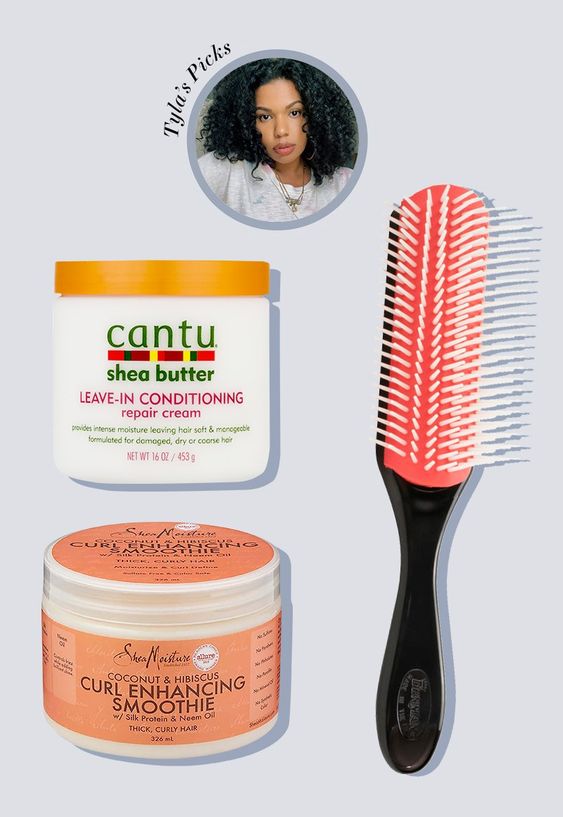
After showering, you can apply styling products to damp hair. If you apply curl styling cream, it will maintain your curls shape. You can also use a conditioner to help your hair retain moisture overnight. If you choose styling products wisely then you will be able to prevent frizz and get amazingly soft hair.
#2 Braid Hair
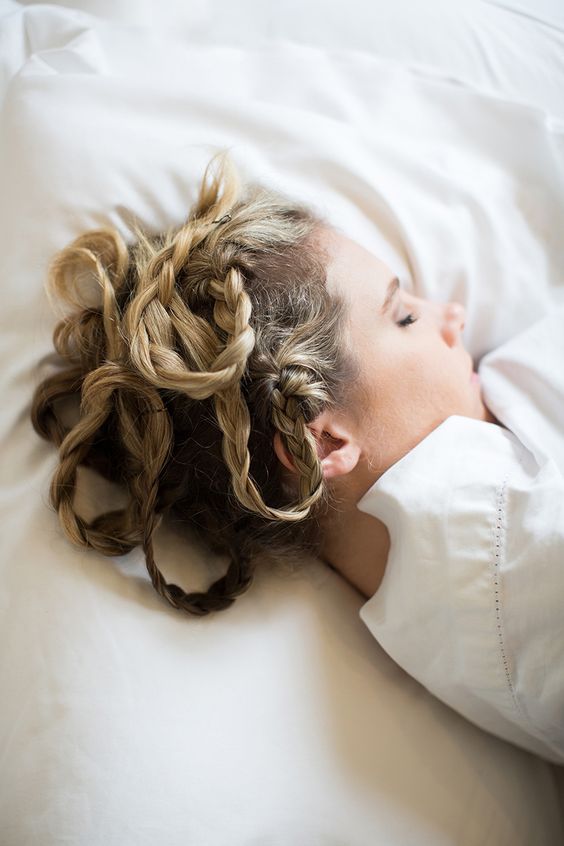
You have the option of braiding your hair before you go to bed. It is important to notice that you need braid your hair when it is 50% dry, which will stop your hair from moving around while you sleep. At the same time, your braids will affect the way your curls dry.
#3 Use Hair Clips
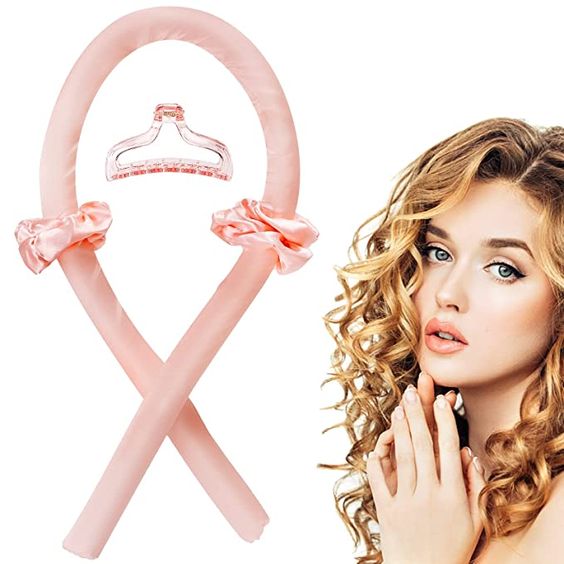
Hair curls can be used to keep your curls in the right shape while sleeping. All you need to do is push a small portion of your curls towards your scalp with your fingers. When compressing them, make sure they retain their curly shape. Then use bobby pins on each section of the compressed curls.
Getting up in the morning, remove these bobby pins from your hair and enjoy the curls. Also, keep in mind that covering your head with a silk scarf is a good option to keep your bobby pin curls in place.
#4 Try the Bantu Knot

To create Bantu knots, use a comb to divide your hair into small sections and start curling each section until it forms a spiral. Twist each section so that it sits flat on your head, then use bobby pins to secure each section individually. Each knot is called a Bantu knot and involves dividing your hair into 8 to 10 sections. In the morning, untie each knot and enjoy your well-defined curls.
#5 Protect your Hair with a Satin Bonnet
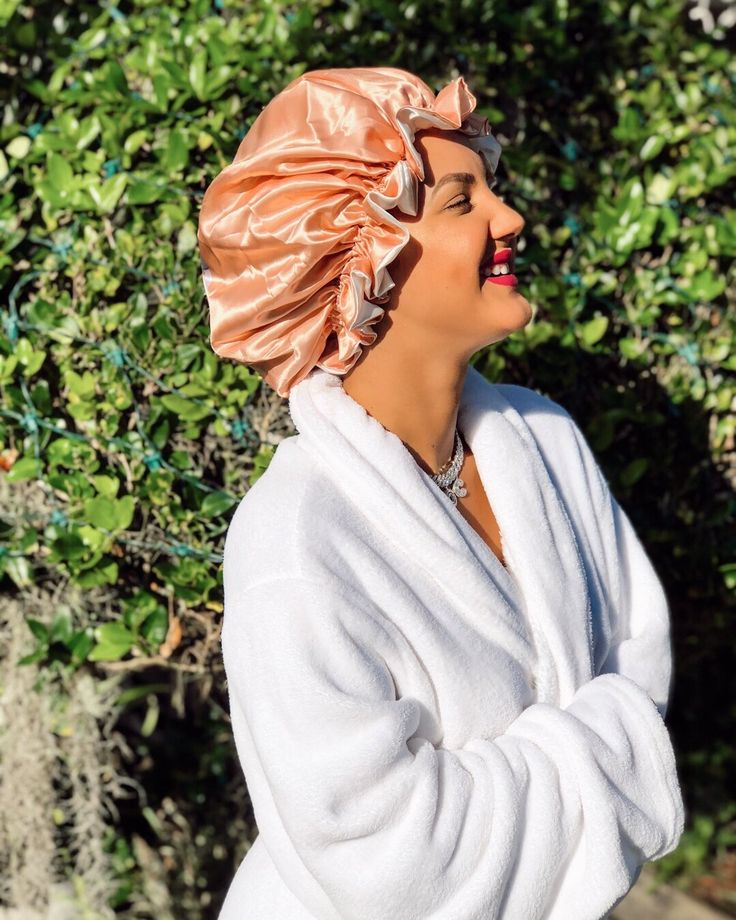
After trying a bantu knot or using bobby pins, wear your hair in a satin bonnet to ensure that your curls retain their shape and position. Satin hats are easily available at local shopping and online shops.
Final thoughts
All in all, It is best to let your hair dry completely before going to bed as sleeping with wet hair is not healthy for your hair strands or scalp. Continuously sleeping with wet hair can lead to increased breakage, frizz, split ends, dryness, dandruff, various scalp health issues and so on. To mitigate potential damage, you can adopt the tips above mentioned according to the shape of your hair.
Images credit: Google, Pinterest, YouTube.
